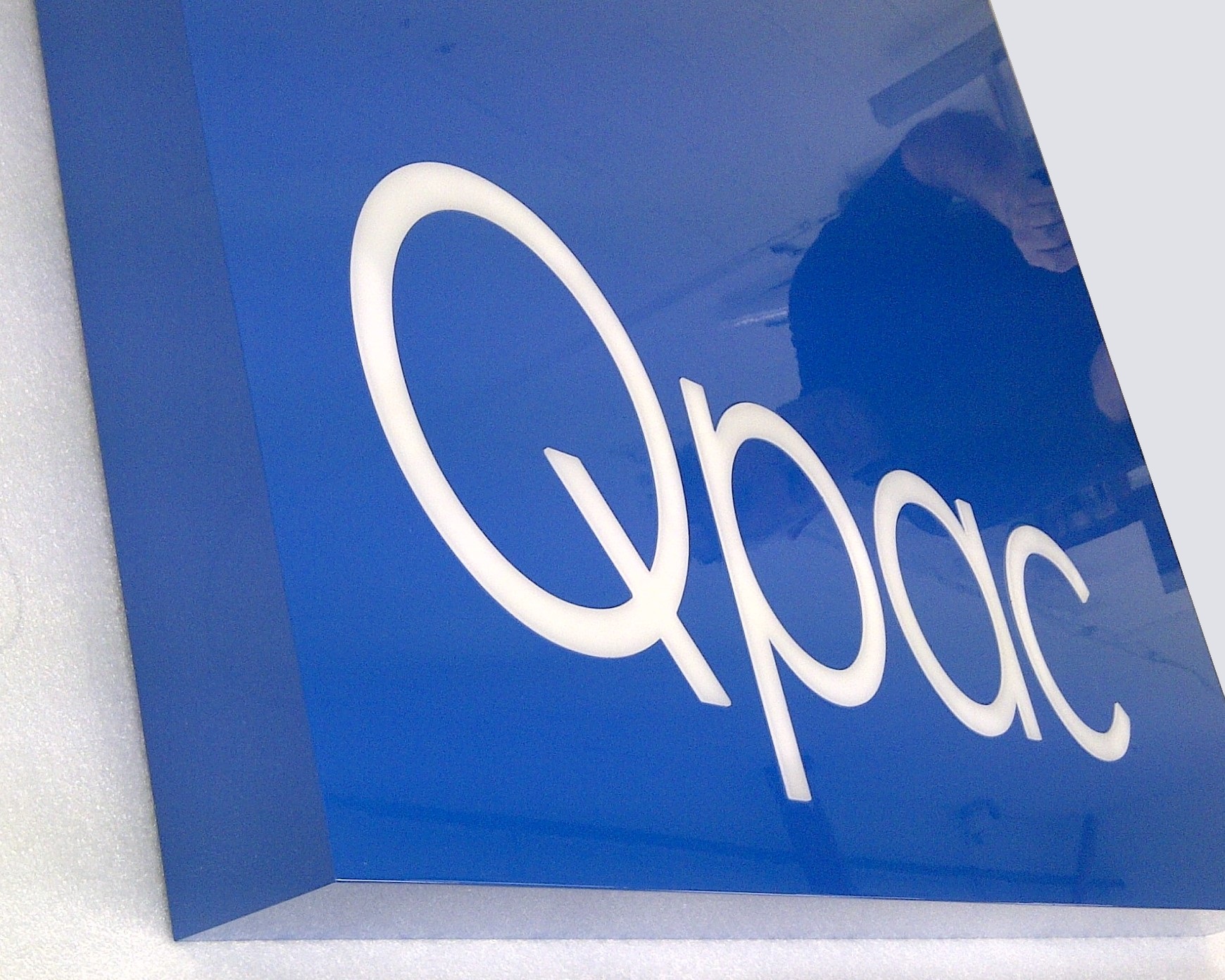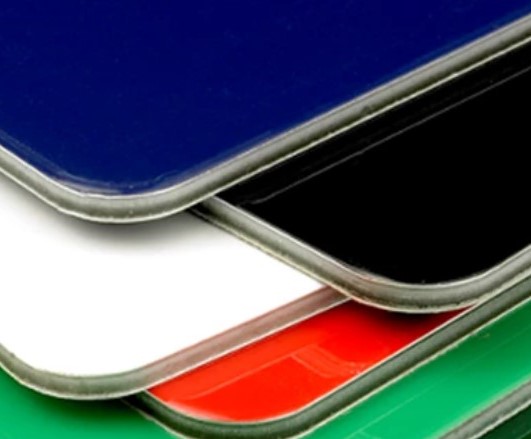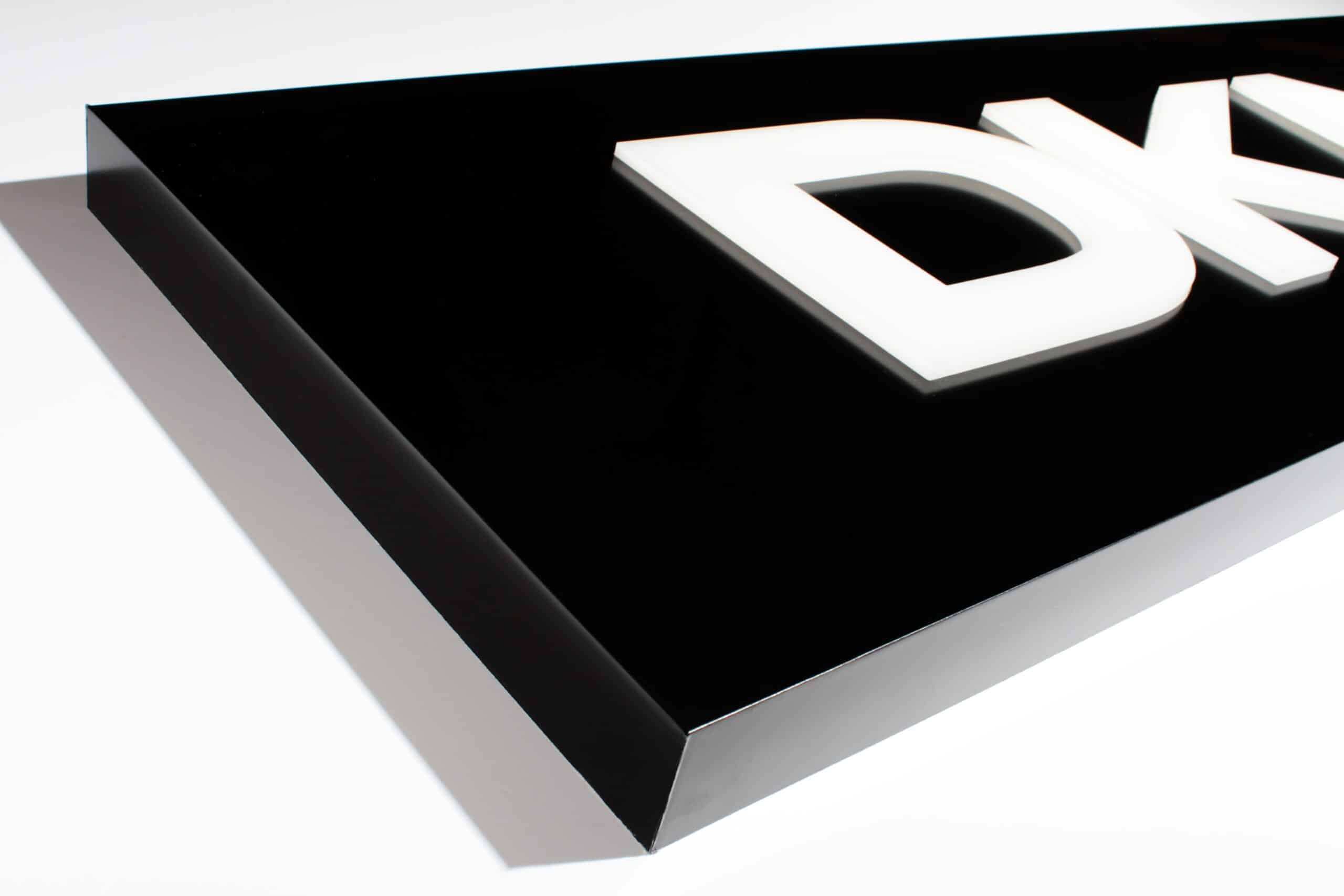What Is Aluminium Composite In Signage?
As a key supplier of sign trade supplies and systems, Cherwell are often asked about the difference between these two important products. Used extensively to create folded aluminium sign trays, both start life as flat sheets. Aluminium composite sheet consists of two thin layers of aluminium with a plastic core laminated between them. The surfaces look and act very similar to solid sheets of aluminium, but with much less metal, making it cheaper and lighter.
In the dynamic world of signage, staying ahead means embracing materials that offer efficiency, versatility, and cost-effectiveness. This is where Aluminium Composite Material (ACM) steps into the spotlight, increasingly becoming the material of choice for sign-makers across the UK, nudging aside traditional solid aluminium sheets. Why?
Cost-Effectiveness
The most immediate benefit of ACM is its lower cost per square metre. This cost advantage allows sign-makers to manage larger projects or offer more competitive pricing, all while maintaining high-quality outputs. The cost of turning the ACM is into a finished sign is also considerably less, due to the simpler manufacturing process.


Simplified Manufacturing Process
The manufacturing process with ACM is streamlined and significantly faster, especially when using CNC routers. Since the powder-coating stage is already completed during sheet manufacturing, the assembly team can bypass this time-consuming process, enabling very fast production times. This simplification translates into quicker turnaround times, enabling sign-makers to meet tight deadlines without compromising on quality.
Aesthetics and Versatility
ACM panels come in a ready-finished, wide colour choice, catering to diverse aesthetic requirements with ease. This eliminates the need for additional painting or finishing, saving both time and resources. The crisp corner folds achievable with ACM lend a polished and professional look to the signage, a critical factor in creating impactful and visually appealing signs.


Durability
ACM isn’t just about immediate benefits; it also offers long-term advantages. Proponents of solid aluminium sheet will point out lifespan differences, however, the durable finish of ACM can comfortably last ten years or more, ensuring that the signs withstand the elements and retain their aesthetic appeal over time. For many types of signage, a branding change or other update is likely to happen within that timeframe. With a massive expansion of ACM in the construction industry, more durable ACM grades have been developed and a 5-year warranty on colour fastness is readily available.
Sustainability
At one time recycling of ACM was not viable, but as times have changed, this is now available. Very large quantities of ACM are used for building cladding, which has made the development of credible recycling processes worthwhile, with zero to landfill being the goal. Another aspect is the use of recycled content in the plastic core of ACM – this can typically be at least 80% recycled.
Larger Sizes for Seamless Signage
The availability of larger sheet sizes is a game-changer, allowing for bigger, seamless signs without joins. ACM sheets come up to 4m long, whereas solid aluminium is only 3m at the best. This is particularly beneficial for large-scale commercial or outdoor signage where visual impact is key. This also brings in weight saving, as handling and installing very large signs is easier when the weight is about half that of similar solid aluminium equivalents.
Security Aspect
Interestingly, the lower scrap value of ACM compared to solid aluminium sheets makes it less likely to be targeted for theft. This aspect can be crucial, especially in areas where metal theft is a concern.
Drawbacks of ACM
After listing out the reasons why ACM is so popular, it’s important to consider some drawbacks of ACM. Notably, it is not as impact-resistant as solid aluminium, potentially affecting durability in high-traffic or vulnerable locations. The corner folds, though aesthetically pleasing, are not as strong as those in solid aluminium, posing a risk in certain applications. This can be somewhat alleviated by adding aluminium angles on the rear of the tray. Due to the plastic core, ACM cannot be welded, making the creation of shaped panels more challenging. Moreover, its shorter lifespan and harder to recycle compared to solid aluminium are flagged as environmental concerns. Additionally, ACM cannot be powder-coated, as it would not stand up to the oven-baking process. If a special colour is required (and if vinyl-wrapping is not sufficient), a wet-paint process must be used, which is slower and not so readily available as powder-coating.
Summary
In conclusion, Aluminium Composite Material presents a compelling package of benefits for sign-makers in the UK and can be used increasingly once you understand its limitations. It’s a material that aligns with the industry’s evolving needs – cost-effective, aesthetically versatile, durable, and efficient to work with, but with specific drawbacks that will apply to certain situations. As the signage industry continues to grow and adapt, ACM stands as a material well-suited to lead the way.
Related:


